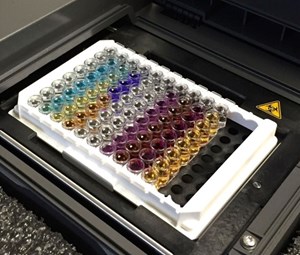What's new in production
Years ago, when I was employed by an oil service company, there came a time when there was an upper management edict regarding the submission of technical papers. It was decided, and asserted, that technical professionals worldwide should submit as many paper abstracts as possible to upcoming conferences. After all, the competition was doing it, and it was overwhelming our company with the relative numbers of papers and presenters at key conferences. I argued that the emphasis should instead be on “quality over quantity.” Not simply on quantity, or that “more is better” is actually not better.
My argument failed, and quality (and reputation) did suffer at the expense of quantity, at least in my opinion. In the oil field, “more is better” is also a common belief, especially in operations related to well production and stimulation. For example, in onshore hydraulic fracturing of shales and tight formations, it’s often more proppant, more water, and more rate. This has certainly been the case with proppants, where cheaper, lower-quality sands have sometimes gained favor over more expensive but sufficiently higher-quality sand, to the detriment, often unknowingly, of long-term production. In offshore waterfloods, as another example, it’s often more water and more rate that carries the day, with the subsequent slipping of water quality.
Water quality and quantity. In large-scale fracturing operations, the quantity of water is often overriding to the quality of water. Large quantities of water may, indeed, be necessary, but that should not be at the expense of water quality. So, why not quantity and quality? And by water quality, it isn’t just solids or bacteria content, which are typically viewed as the primary issues, but the pH, alkalinity, and ionic composition of the water that are also very important.
Water for onshore fracturing is obtained from multiple sources—lakes, waterways, municipalities—and on an increase is the use of recycled produced water, often mixed in varying ratios with other more abundant surface water sources. The ionic compositions vary greatly, even within a single operation.
Offshore, waterflooding is a long-standing, required secondary recovery method to extract more oil from reservoirs, and to maintain their longer-term production. Huge volumes of seawater are injected, including with the reinjection of produced water mixed in varying ratios with seawater. Again, more water may be necessary but it should not be at the expense of injection water quality. And as with fracturing, it’s not only about solids content in need of filtration or bacteria potentially present, but the ionic composition of the water, especially when produced water is reinjected and mixed with seawater.
Water ionic composition in fracturing. In fracturing, the ionic composition of water can affect fracturing fluid in different ways. Among other things, high contents of certain ions can reduce the build of viscosity with friction reducer polymers or other polymers commonly used, as well as the ultimate target viscosity. Either can increase polymer hydration time or increase breakdown and injection pressures.
Compositions of combined municipal or waterway waters with produced water can be scaling, maybe not at the surface when mixed (which can happen) but down the road during production. Both low- and very high-salinity waters injected can “shock” clays in the formation, which reside in equilibrium with formation brine and its salinity and composition. Clay shock can result in the swelling of certain clays or the dispersion of other types of clays, with both mechanisms reducing well flow capacity.
Water ionic composition in waterflooding. In waterfloods, the same issues as in hydraulic fracturing apply. Additionally, regarding ionic composition, one of the most important is sulfate content. Certain waterfloods require the substantial reduction of sulfate ion content, using special filtration methods to eliminate the potential for scaling in the formation (e.g., sulfate combining with calcium or barium contents in produced brine or leached from the formation during injection), as well as to prevent well souring caused by the conversion of sulfate to hydrogen sulfide (H2S) by sulfate reducing bacteria.
Seawater typically contains over 2,500 ppm sulfate ion, and reduction targets are typically at or below 50 ppm. When seawater is mixed with produced water for reinjection, sulfate levels can vary significantly, plus there are other potentially problematic ions with which to contend. The risks of scaling and solids precipitation during injection and in the reservoir, and again reservoir souring, may be elevated by mixing waters in ratios that are not fully compatible, or which are but nevertheless elevate scaling risk, for example.
Water analysis. Obviously, a key practice in ensuring appropriate and effective water quality in fracturing and waterflooding (and in any well workover or stimulation operation for that matter) is water analysis. And analyses of water for use in these operations is common practice. However, with all of the advancements in technologies related to production, an effective method for immediate, onsite testing of water composition and properties is not one that has been available or, really, of much interest in the oil field.
Operators and service companies still rely on collecting samples of water to be used and submitting the samples to a third-party lab for analysis, waiting for the results. Much of the time, such test results can only confirm what was done right or wrong after the fact. And the properties of water samples change over time and depending on when submitted to a laboratory offsite. The pressure and temperature change after taking a sample, thereby changing the sample’s properties.
Insoluble solids can form (combination of certain cations with certain anions), reducing the measurable contents of those critical ions in solution. Dissolved gases, such as CO2, disappear, changing sample pH and scaling tendency. But the good news is that there is a relatively new solution for accurate, onsite water sample testing. It’s just that not many know about it.
Water Lens is a unique test kit that utilizes several independent detection methods in a 96-well plate format (each 8-well strip with 12 strips to a plate) is filled with a different diluted fluid sample (diluted to varying degrees depending on what is measured). The test kit operates by colorimetric absorption, using photosensitive dyes. Detailed discussion of the test method, the chemistry by which the Water Lens test kit works, and the proprietary software associated with it, can be found following this link: https://www.waterlensusa.com
Water Lens has found considerable success and is established in the wastewater treating, industrial water, and agriculture industries. It has made some inroads into the oil field over the last several years, but not nearly enough. Increased awareness of Water Lens is called for in the oil and gas industry, especially in fracturing, as well as in acid stimulation for stimulation fluid QC (not previously mentioned), and in waterflooding operations.
The ability to conduct onsite water analyses—for a multitude of ionic properties (not just for the basics, such as pH and TDS/TSS)—would be an advancement in the effectiveness and on-the-fly planning where needed, such as in operations where water source properties can change throughout (e.g., shale fracturing). The challenge is that the unfortunate, general de-emphasis of water quality in well operations does not have an obvious or easily measurable effect on well performance. So, what is not immediately seen, is not believed to exist. But over the longer term, the quality of stimulation fluid water composition, or that of waterflood injectate, can have a significant bearing on ultimate well productivity and hydrocarbon recovery.

- The last barrel (February 2024)
- Oil and gas in the Capitals (February 2024)
- First oil (February 2024)
- E&P outside the U.S. maintains a disciplined pace (February 2024)
- Prices and governmental policies combine to stymie Canadian upstream growth (February 2024)
- U.S. operators reduce activity as crude prices plunge (February 2024)



